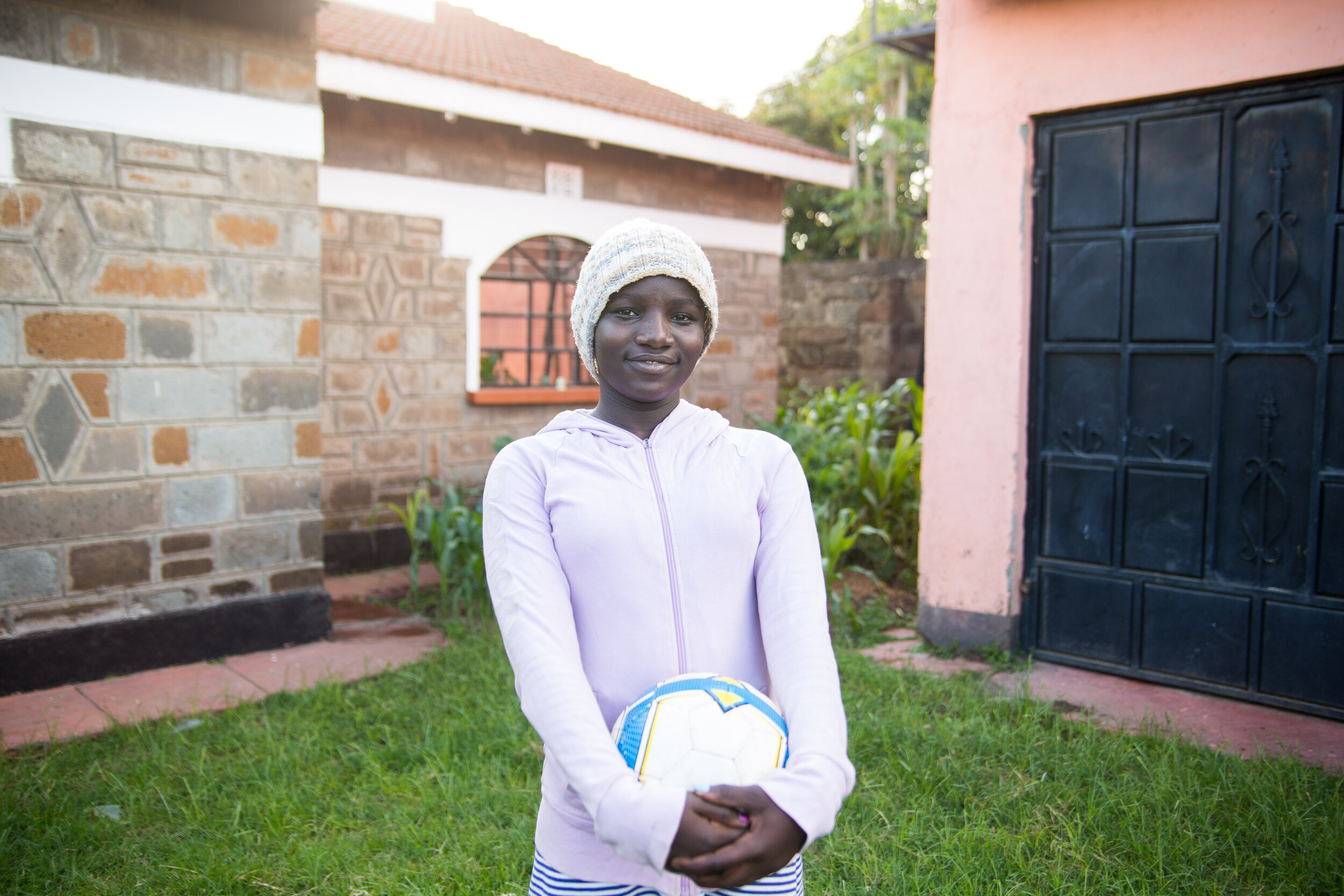Conjestina’s story: Her childhood trauma, rescue and healing
What’s a powerful predictor of health outcomes later in life? Childhood trauma. That’s according to Katie McLaughlin, PhD, an associate professor of psychology at Harvard University. “Not only mental health outcomes like depression and anxiety,” she says in a recent press release, “but also physical health outcomes like cardiovascular disease, diabetes and cancer.”
Our girls at the Safe House in Kenya know about childhood adversity all too well. And many of them have already experienced the emotional and physical aftermath of violence that occurred in their earlier years. But because of the intervention of our partners in Kenya, the girls and young women have been able to receive the care they need and their futures have been completely changed.
Conjestina is one of those beautiful girls. And her story reminds us that love overcomes the deepest wounds.
In a small mud hut in the middle of the slums, a child faces the impossible.
At just 4 years old, Conjestina was burdened with a great responsibility — caring for her dying mother.
Her mother, who was known for being mean and cruel, was bedridden. That meant Conjestina had to bathe her, search for food and then feed them both. When her mother died, her uncle threw Conjestina and her mother’s body out on the garbage heap and burned down the house. Her life was filled with trauma. If Conjestina had not been rescued, she likely would have been trafficked or died at a very young age.
But that was just the beginning of her journey to restoration.
When Conjestina was rescued, she was a very angry little girl — yelling, bitting and hitting others. Unsurprising when you consider that kids who’ve experienced deep trauma can struggle to identify, manage and express their emotions. And girls like Conjestina who grew up fearing abusive authority figures often react aggressively and defensively in response to a harmless interaction they regard as an attack. Without an environment of protection, they can develop methods of coping that interfere with their ability to live, love and accept love from others.
At first, Conjestina never smiled, and she always had a scowl on her face. But living at the Safe House has shown her what love really is.
And there’s nothing that love can’t heal.
Today Conjestina is not that resentful little girl anymore. This sweet 13 year old always has a smile on her face. She laughs all the time and is very kind. She loves to joke, play games, swim and ride bikes. She is number one in her class. With her creative spirit, she loves to make things out of nothing. She sews doll clothes and fashions dollhouses and furniture out of mud.
And she has hopes for her future — a beautiful thing because children who go through trauma often live in survival mode, not knowing how to dream about a hopeful tomorrow. Conjestina wants to be a lawyer when she grows up. Her wish is to get high marks on her exams, and to go back to Mombasa, a coastal city in southeast Kenya, since she loves it there. What a transformation.
You can make a difference.
If you feel touched by Conjestina’s story and want to join us in changing lives like hers, you can. Here’s how it works.
We partner with local organizations who share our vision and have firsthand experience of the areas we work in. We do this so we can make sure every dollar counts and has the biggest impact possible on the lives of all the rescued children. In our Safe House, the girls gain a family — a home where they find acceptance, a sense of belonging and lots of love.
We have a community of monthly donors called “The Family”. This community provides exploited girls and young women with everything they need to be restored and live fulfilled lives. Visit The Family page to learn more and become a part of an impact-driven community.
Part of our mission is to educate and empower at-risk youth so trauma never has to happen in the first place. To join us in our fight, donate now.

